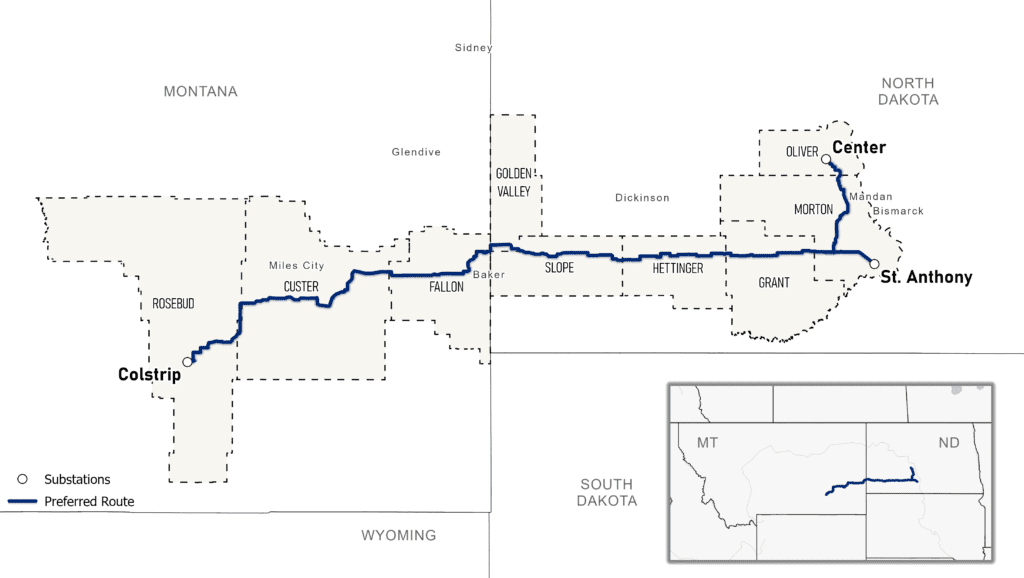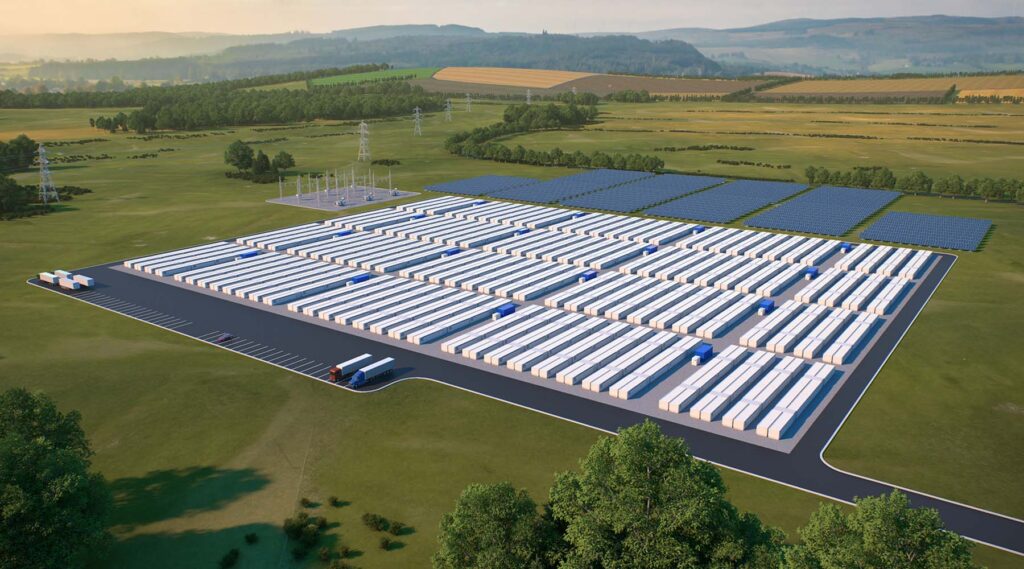$2.2B for 13 GW of New Transmission Capacity: DOE Unveils Latest Boost for U.S. Grid Modernization
The Biden administration will invest $2.2 billion in eight projects under its Grid Resilience and Innovation Partnership (GRIP) program to bolster the nation’s power grid with nearly 13 GW of new transmission capacity across 18 states.
The funding, announced on Aug. 6, marks the second round under the Department of Energy’s (DOE’s) GRIP program, a $10.5 billion program launched by the 2021-enacted Infrastructure Investment and Jobs Act (IIJA). The law designates funding for three mechanisms through 2026: $2.5 billion in competitive grants for Utility and Industry Grid Resilience, $3 billion for Smart Grid grants, and $5 billion for Grid Innovation. In October 2023, the DOE unveiled 58 projects that would receive up to $3.5 billion to improve grid flexibility and resiliency.
The newly unveiled selections will catalyze $10 billion in total public and private investments to support eight projects. Projects will focus on building 600 miles of new transmission lines and reconductoring more than 400 miles of existing lines across 18 states.
“That’s roughly six and a half Hoover Dams of power,” Energy Secretary Jennifer Granholm said during a press call on Monday. “When you combine these Group 2 investments with the ones from the first round, we’ll be adding 50 GW of capacity to the nation’s grid and over 1,000 miles of transmission lines.”
Second Round GRIP Investments Focused on Transmission Construction and Upgrades
According to the DOE, the second round of DOE selections under GRIP will emphasize large-scale transmission infrastructure enhancements under its “Grid Innovation” program.
That compares to the first $3.5 billion round, which allocated funding to 16 utility and power industry projects alongside eight projects spearheaded by states, local, and tribal governments to enhance grid resilience and reliability. The first round also funded 34 “smart grid” projects to boost power system flexibility and efficiency.
DOE GRIP Program Second Round Selections (August 2024). Source: DOE/POWER
The second round allocates its most significant federal investments to three major projects.
A Major East-West Interconnector. GRIP allocates $700 million for the North Plains Connector Interregional Innovation (NPCII) project in Montana and North Dakota to develop a 3-GW high-voltage direct current (HVDC) voltage source converter (VSC) transmission line bridging the Western and Eastern Interconnections. “The core project, North Plains Connector, would be the first HVDC project to connect three regional control entities: the Western Electricity Coordinating Council (WECC), Midcontinent Independent System Operator (MISO), and Southwest Power Pool (SPP),” the DOE noted. The North Plains Connector is an approximately 415-mile and up to 525 kV HVDC line that is still in the planning and development phase. Approvals are expected in 2026, and the line could be operational as early as 2031.

Advanced Conductor Technologies for California. GRIP allocated $600 million to the California Harnessing Advanced Reliable Grid Enhancing Technologies for Transmission (CHARGE 2T) project in California, far below the $2 billion sought by a coalition of energy regulators and California-based utilities in their April 2024 filed application. Applicants include the California Energy Commission, California Public Utilities Commission, California Independent System Operator (CAISO), Pacific Gas and Electric Company, Southern California Edison, and the University of California, Berkeley Energy Institute at Haas.
The project proposes to upgrade more than 400 miles of steel powerlines across the CAISO system using advanced conductors that contain carbon fiber and/or composite cores to allow lines to carry more capacity and possibly grid enhancing technologies (GETs) to reduce congestion. The DOE on Monday said GRIP funding will allow the project to reconductor “more than 100 miles of transmission lines with advanced conductor technologies and deploy dynamic line ratings (DLR) to quickly and significantly increase the state’s system capacity to integrate more renewable energy onto the grid.” CHARGE 2T also supports transmission interconnection reform through process improvements, an interconnection portal, workforce investment, and educational resource development.
Infrastructure to Enable 4.8 GW of Offshore Wind. The second round allocates $389 million to the Power Up New England project, which features “new and upgraded transmission points of interconnection in Southeast Massachusetts and Southeast Connecticut to unlock up to 4,800 MW of additional offshore wind and innovative battery energy storage systems in Southwest Connecticut and Northern Maine to enhance grid resilience and optimize delivery of renewable energy.” Project developers supporting the application include Elevate Renewables, Eversource Energy, multi-day energy storage technology provider Form Energy, and utility National Grid. GRIP, notably, did not select a second project, the Clean Resilience Link, proposed by a coalition of New England states to increase transfer capacity between the two regions by up to 1 GW.
Part of the grant entails a $147 million award to support a multi-day energy storage system in Lincoln, Maine. Power Up partner, Form Energy, is slated to deploy an 85-MW/8,500 MWh energy storage project at the Lincoln Technology Park in Lincoln, Maine, that will utilize iron-air technology to continuously discharge energy for up to 100 hours or just over four days. “The project will also strengthen the transmission system to support the delivery of higher loads of power from renewables, including nearby onshore wind turbines,” the Maine Governor’s Office on Tuesday. “The award signifies meaningful progress toward Maine’s goal of 400 MW of energy storage installed by the end of 2030.”

Projects Will Explore Existing Capacity Expansion, Data Center Flexibility
GRIP, in addition, allocated $250 million to the Reliable Electric Lines: Infrastructure Expansion Framework (Project RELIEF) to deploy advanced conductor cables and boost transmission capacity using existing rights-of-way, improving grid reliability and enabling the integration of more than 500 MW of renewables across six states: Utah, Oregon, Wyoming, Idaho, Arizona, California. Another $87 million went to the Tribal Energy Resilience and Sovereignty (TERAS) project to develop Tribe-owned microgrids in Northern California.
North Carolina separately received a $57 million grant to rebuild the 230-kV Lee-Milburnie transmission line. The project in partnership with Duke Energy will incorporate “high-temperature, low-sag advanced conductors and monopole steel structures that will enhance resilience and reliability within the existing right-of-way,” the DOE said.
Clean Path New York, a $3 billion project comprising more than 20 renewable projects and a 175-mile underground transmission line in New York State, received $30 million in federal funding. The project is a public-private collaboration between the New York Power Authority (NYPA) and developers energyRe and Invenergy.
The second round of funding, however, also provides $85 million for Virginia’s Data Center Flexibility as a Grid Enhancing Technology project. The Virginia Department of Energy sought $106 million to implement battery energy storage systems (BESS) at the Iron Mountain data center in Virginia. The government agency and its partners plan to deploy a combination of turbine, solar PV, and BESS technologies at the Grace Complex in South Carolina.
On Monday, a DOE senior official told reporters that the project was noteworthy because the data center is seeking to meet demand as well as performing as a flexible resource. “Sometimes, we think of data centers as only drawing on resources,” she explained. “But this is a situation where we might actually be able to work with these types of complexes in order to help provide more resources, particularly when there’s a need for high capacity.”
A Holistic Approach to T&D Modernization, Expansion
DOE officials on Monday said more GRIP funding is on the horizon. “There’s much more to come from GRIP,” said Granholm. “Very soon—we’re going to be anticipating that this fall or in early winter—we’ll be announcing the next round of selections under GRIP.”
White House National Climate Adviser Ali Zaidi, on Monday noted that the funding is just one part of a larger strategy and roadmap laid out by the Biden administration to modernize the grid. In its October 2023–issued National Transmission Needs Study, the DOE suggested that even assuming moderate demand growth and high clean energy growth, 54,500 GW-miles of new transmission will be needed nationwide by 2035—a 64% increase from today’s transmission system.
As detailed in POWER’s recent in-depth profile on recent federal actions to boost transmission capacity, the DOE has set ambitious targets for grid improvements, including upgrading 100,000 miles of transmission lines by 2029.
| For more context about the federal and state-driven push to expand U.S. transmission capacity, see “2024 Shaping Up to Be Dramatic for Transmission and Distribution,” POWER’s in-depth feature published in May 2024. POWER also routinely publishes T&D POWER Direct, a e-letter focused on transmission and distribution topics. |
Along with allocating significant investment under the GRIP program, the agency’s Grid Deployment Office recently announced three interregional transmission lines to receive $1.3 billion in federal funding under the Transmission Facilitation Program (TAP), including projects in Utah, New England, and Arizona. Earlier this year, the DOE identified 10 preliminary National Interest Electric Transmission Corridors (NIETCs) to prioritize federal support and streamline regulatory processes. The DOE’s NIETC designation process, which involves a four-phase approach with public feedback, environmental reviews, and a comprehensive study, could produce final designations as early as next year, agency officials suggested.
To expedite permitting, the DOE established the Coordinated Interagency Transmission Authorization and Permits (CITAP) program and finalized a rule to streamline environmental reviews for transmission upgrades. And, to boost the expediency of environmental reviews, the DOE on April 30 finalized a categorical exclusion—the simplest of three types of review established by the National Environmental Policy Act (NEPA)—for upgrading and rebuilding T&D lines. The rule bolsters prospects for T&D line upgrades and rebuilds, including allowing the replacement of components with more efficient or resilient technology, such as reconductoring. Most recently, in May, the Biden administration, in partnership with 21 states, launched the Federal-State Modern Grid Deployment Initiative.
“This is also part of a strategy to deploy more capacity on the grid in existing rights of way, a tool that we’ve tried to advance really from day one,” Zaidi said. The new GRIP selections show “thematically how these innovative interregional projects are able to advance in a permitting ecosystem that has been vastly improved, thanks to the leadership from the Biden-Harris administration and from Secretary Granholm,” he said. “You see a lot of federal interstate and private sector collaboration, especially in regions to deliver key regional outcomes, including the advancement of nearly 4.8 GW of offshore wind in the Northeast.
Zaidi highlighted the speed at which the initiatives have been implemented. “I think back to a meeting the President convened in the Roosevelt Room two summers ago. Secretary [Granholm] was there, [Interior Secretary Deb Hollen] was there, and we had governors from the Northeast. One of the big topics they talked about was the need to build and for the federal government to be a partner in building regional infrastructure to harness this power from off of our shores. This shows dramatic progress, advancing the playbook that was literally drawn up in that room.”
—Sonal Patel is a POWER senior editor (@sonalcpatel, @POWERmagazine).